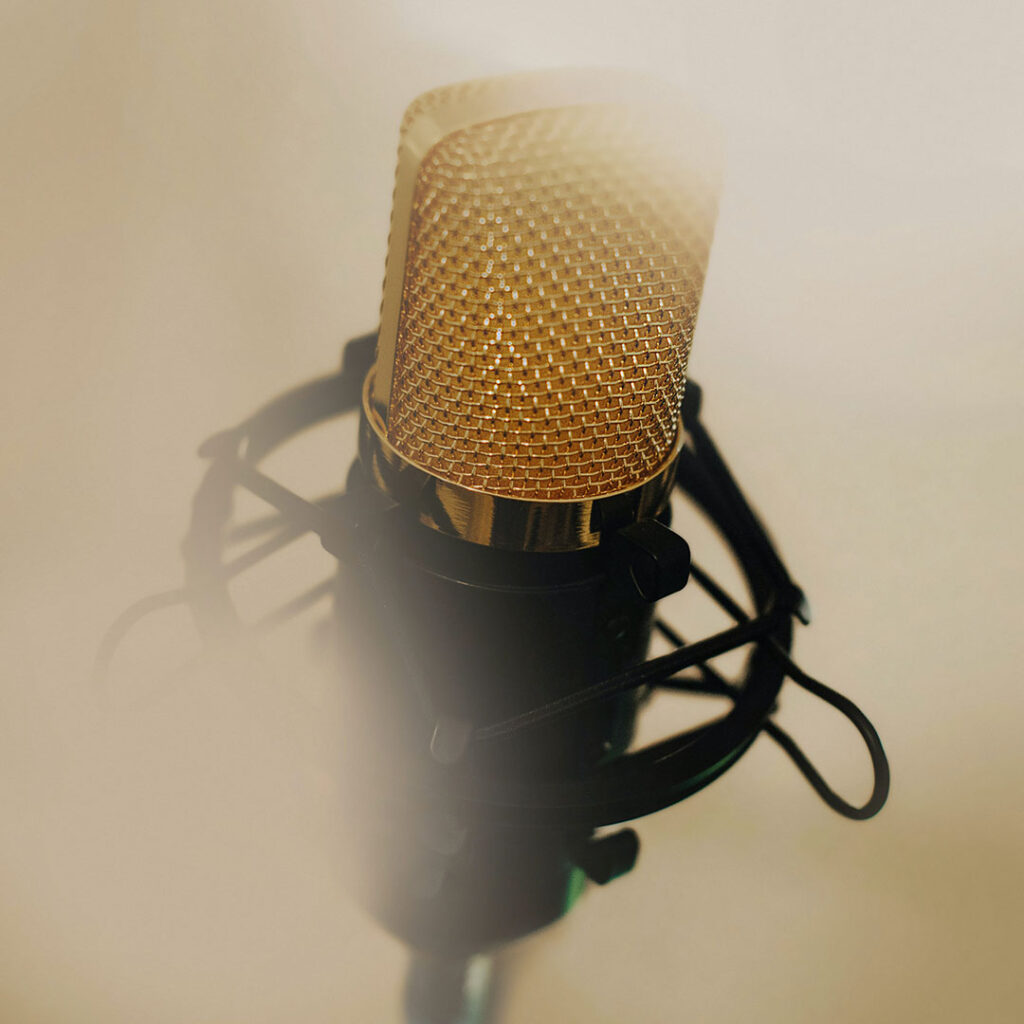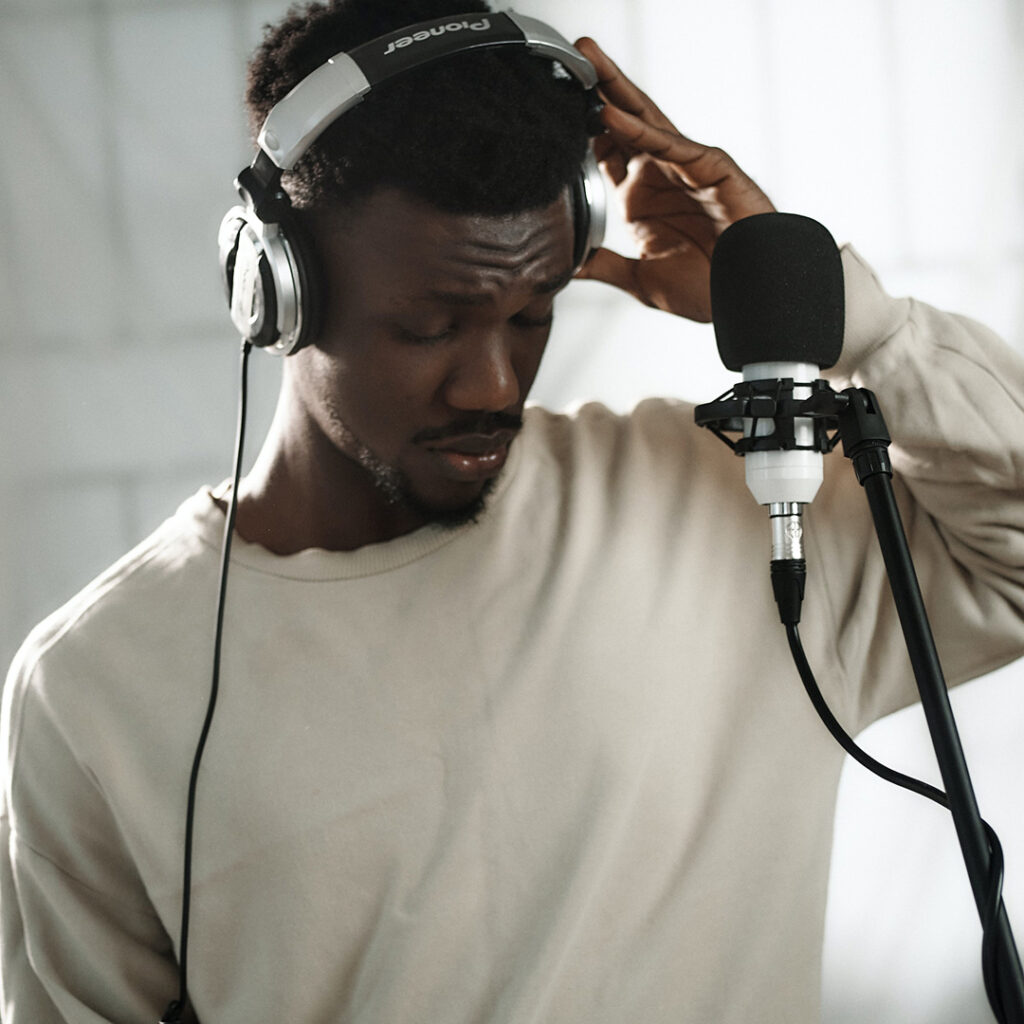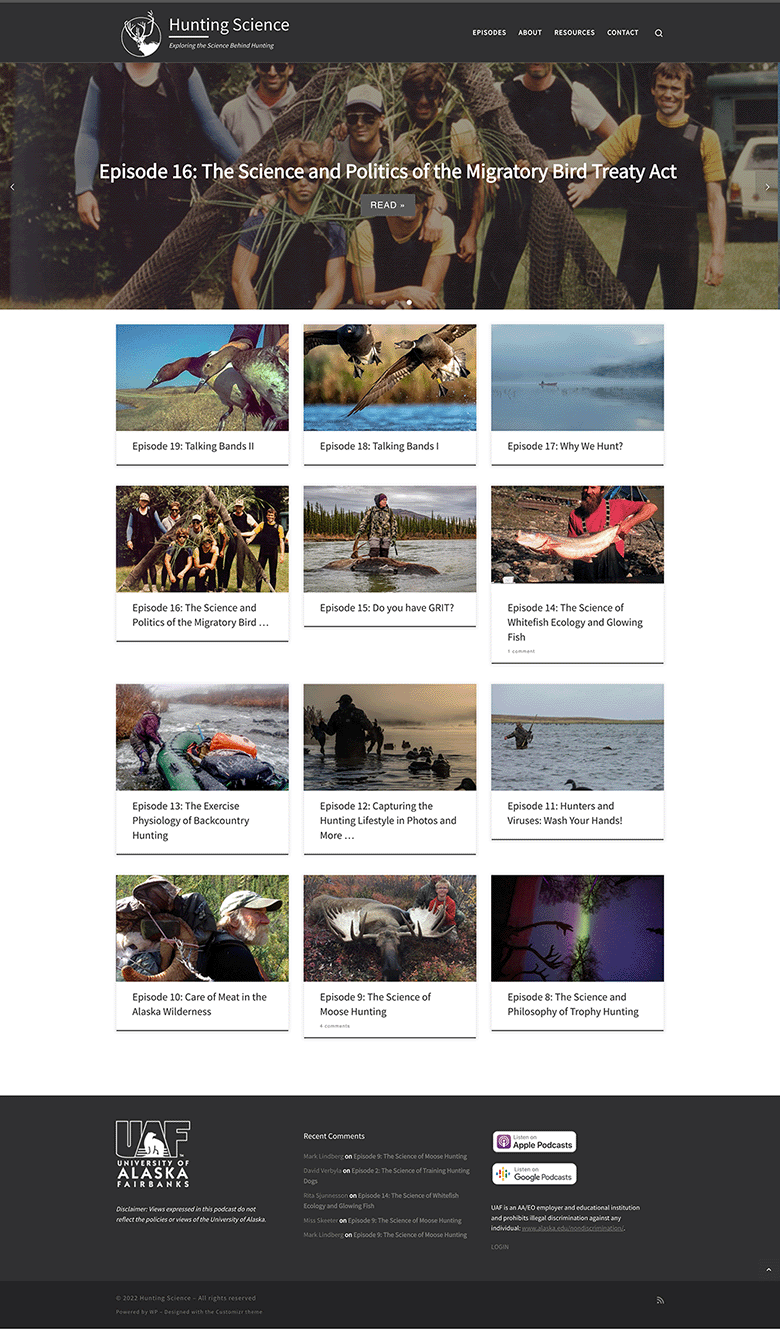Audio & Podcasting
Make your voice heard.
What are Audio Recordings & Podcasting?
Audio recordings and audio podcasts are forms of audio content that can be added to your course. Recording and producing audio content is fairly straight-forward, and does not require much specialized equipment to get started. Audio recordings can be shared for consumption simply by uploading or linking an audio file to a website, email, or social media platform. Podcasts differ from simple audio recordings in that listeners are able to subscribe to podcasts and are notified when there are new episodes. Podcasts require a specific method of delivering syndicated audio content out to listeners via feed subscriptions. Podcasts are typically episodic or serial, talk-focused, and delivered by one or many popular distribution services, such as Apple Podcast, Google Podcast, Stitcher, or similar “podcatcher” apps. Podcasting became popular along with Apple iTunes and iPods (hence “pod” in the name) but now refers broadly to any syndicated audio content that is delivered over the web that notifies listeners/subscribers when new episodes are available. This is what differentiates the podcast format from recorded audio that can also be used in courses.
A major reason that podcasting has gained in popularity as both a platform for content and a tool for students is its “simplicity and ease of use” (Educause, 2005). It is also well-suited to asynchronous online environments, including flipped classrooms. Students creating their own podcasts can allow for independent inquiry, as well as for collaboration. Forbes and Khoo (2015) found that asking students to generate content and resources like podcasts values student voice, active involvement and co-construction of learning.

How Can I Use Audio Recordings or Podcasting in My Course?
- Weekly course recaps
- Short topic based content lectures
- Course Q&A
- Interviews with guest speakers or experts in the field
- Roundtable discussions
- Debates
- Accessibility for low level readers
- Music appreciation or analysis
- Student demonstrations of foreign language ability or pronunciation
- Student group discussions
- Student performance of written work
Many of the above applications could also be done in written form or video form, but podcasting can offer an advantage by focusing student attention on language use and core content, rather than visuals. It can also occupy a niche in many students’ existing media diets.

How-To Instructions and DIY
Questions and Considerations
Creating a podcast can be incredibly simple, or range into level of high quality production. The first goal is to determine your audience. Is it only directed at your students in this semester, or do you want them to live on in future course offerings? Will the content be institution specific or do you want it to have broader appeal to students worldwide studying your discipline?
You should also determine what the bounds of your podcast are going to be. Before recording anything, you should decide:
- Will you be recording alone or will you host other participants?
- How often will you release new podcasts? (be realistic!)
- Will you want other audio in addition to your voice (such as music or other audio to consult)
- How long will each podcast episode be?
Technologies
At the very least, you’ll need an external microphone and a Mac or PC to record on. It’s also possible to use a mobile device, but in that case you will need a quality microphone and an editing program.
- USB Mic for quality audio recording: Samson and Yeti brand mics are reliable and widely used.
- After recording, Audacity is excellent software for powerful, free, audio editing.
UAF has technologies in place to host your podcast. UAF CTL can help set up your podcast website on WordPress. Subscription feeds are built using the Blubrry PowerPress plugin. Your audio content is hosted on the UAF Media server (Kaltura). Once you have recorded your first podcast episode, we can help you launch your podcast and submit it to Apple Podcast and Google Podcast services.

WLF F101: Intro to Wildlife Management
The Hunting Science podcast is Mark Lindberg’s project. Mark came up with the idea for this project as a supplemental resource to the WLF F101 class he developed for online delivery. Since then, the topics for the podcast have expanded, but Mark continues to use them as resources for the course.
Listen: Hunting Science, Episode 2
Research Foundations
Forbes, D. & Khoo, E. (2015). Voice over distance: a case of podcasting for learning in online teacher education. Distance Education 36(3), 335-350.
Lee, M., McLoughlin, C. & Chan, A. (2008). Talk the talk: Learner-generated podcasts as catalystsfor knowledge creation. British Journal of Educational Technology, 39(3), 501-521.
McGarr, O. (2009). A review of podcasting in higher education: Its influence on the traditional lecture. Australasian Journal of Educational Technology, 25(3), 309-321.
Further Resources
- CTL: Crafting Video
- CTL: Screencasting
- The Value of Using Podcasts in Class (The Atlantic)
- Educause Introduction to Podcasting, 7 Things You Should Know about Podcasting, Educause (2005).
- CTL: Quality Matters Resources
